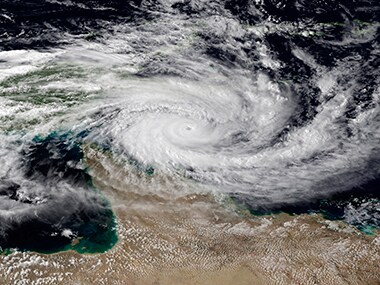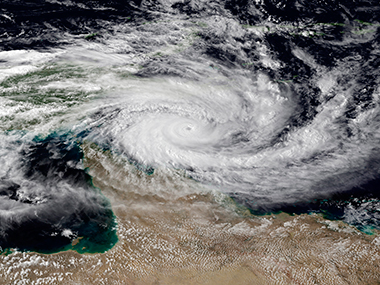The cyclone that is headed towards the Andhra Pradesh and Odisha coast along the Bay of Bengal is named ‘Hudhud’. The cyclone Hudhud is expected to intensify in the next few hours, bringing heavy rain and gusting winds of about 100-110 km/hour as it inches closer to the coast of Andhra Pradesh and Odisha. So, what does Hudhud mean? The storm has been named after the national bird of Israel. The name was suggested by Oman. Hudhud is a colorful bird found across Afro-Eurasia. The practice of naming storms (tropical cyclones) began years ago in order to help in the quick identification of storms in warning messages because names are presumed to be far easier to remember than the numbers and technical terms. How the naming of cyclones began [caption id=“attachment_1749179” align=“alignright” width=“380”]
 Representational image. Reuters[/caption] In the beginning, storms were named arbitrarily. Then the mid-1900’s saw the start of the practice of using feminine names for storms. In the pursuit of a more organised and efficient naming system, meteorologists later decided to identify storms using names from a list arranged alphabetically. Thus, a storm with a name which begins with A, like Anne, would be the first storm to occur in the year. Before the end of 1900’s, forecasters started using male names for those forming in the Southern Hemisphere. Since 1953, Atlantic tropical storms have been named from lists originated by the National Hurricane Center. They are now maintained and updated by an international committee of the World Meteorological Organisation. In general, tropical cyclones are named according to the rules at a regional level. For instance, Hurricane Committee determines a pre-designated list of Hurricane names. As an example for north Atlantic Ocean six lists are used in rotation. Thus, the 2008 list will be used again in 2014. For the eastern north Pacific Ocean the lists are also re-cycled every six years (the 2008 list will be used again in 2014). For central north Pacific Ocean the names are used one after the other. When the bottom of one list is reached, the next name is the top of the next list. But naming of tropical cyclones over north Indian Ocean is slightly different.
So, what does Hudhud mean? The storm has been named after the national bird of Israel. The name was suggested by Oman. Hudhud is a colorful bird found across Afro-Eurasia.
Advertisement
End of Article


)

)
)
)
)
)
)
)
)



